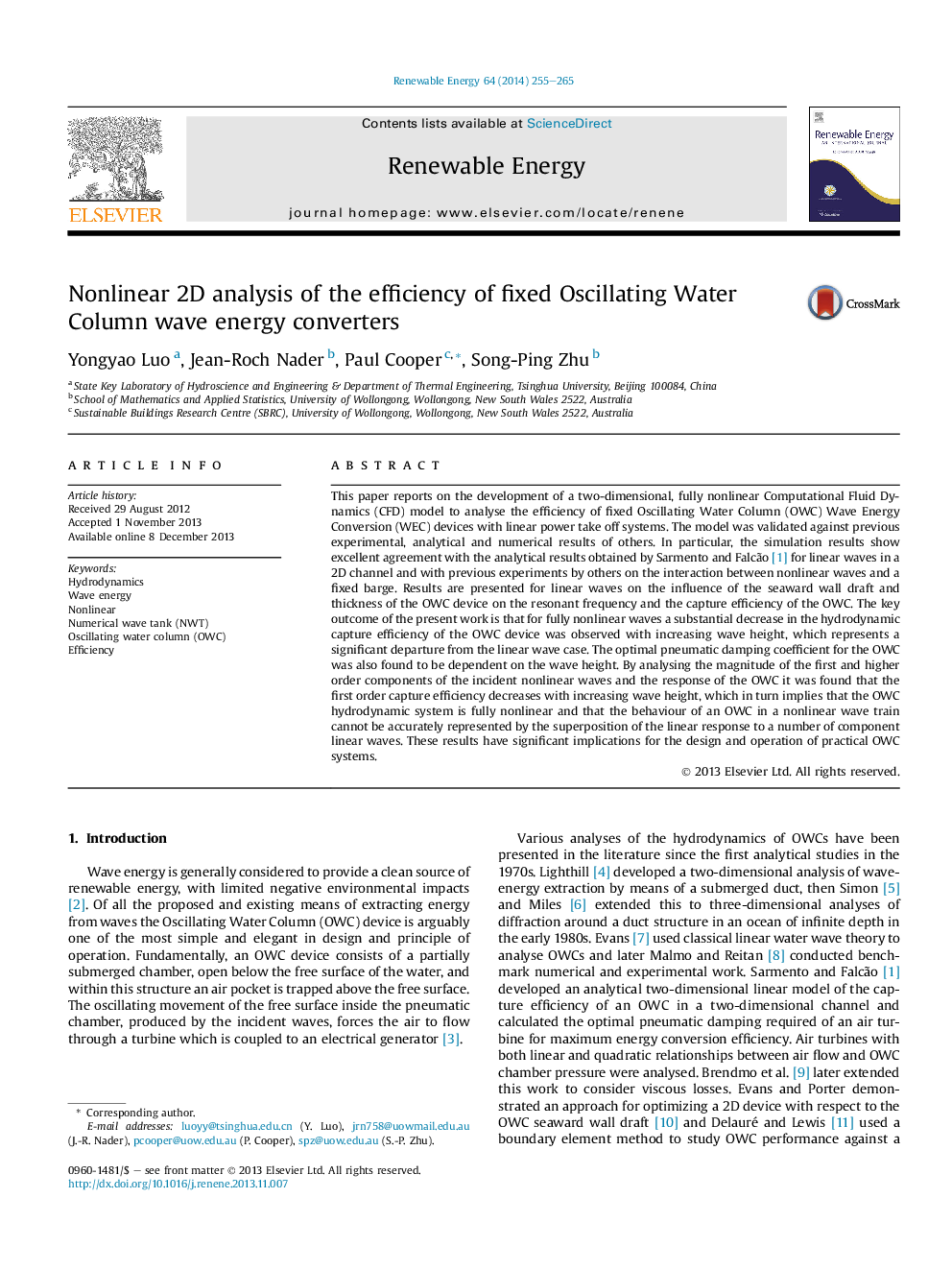| Article ID | Journal | Published Year | Pages | File Type |
|---|---|---|---|---|
| 300096 | Renewable Energy | 2014 | 11 Pages |
•A fully nonlinear Computational Fluid Dynamics (CFD) Numerical Wave Tank (NWT) has been developed.•The NWT has been validated against analytic solutions for OWC performance and experimental results for a fixed barge.•Results show that seaward wall draft/thickness of the OWC significantly influence resonant frequency and capture efficiency.•With fully nonlinear waves a significant decrease in OWC hydrodynamic capture efficiency occurs with increasing wave height.•First order capture efficiency decreases with increasing wave height, i.e. practical OWC systems are fully nonlinear.
This paper reports on the development of a two-dimensional, fully nonlinear Computational Fluid Dynamics (CFD) model to analyse the efficiency of fixed Oscillating Water Column (OWC) Wave Energy Conversion (WEC) devices with linear power take off systems. The model was validated against previous experimental, analytical and numerical results of others. In particular, the simulation results show excellent agreement with the analytical results obtained by Sarmento and Falcão [1] for linear waves in a 2D channel and with previous experiments by others on the interaction between nonlinear waves and a fixed barge. Results are presented for linear waves on the influence of the seaward wall draft and thickness of the OWC device on the resonant frequency and the capture efficiency of the OWC. The key outcome of the present work is that for fully nonlinear waves a substantial decrease in the hydrodynamic capture efficiency of the OWC device was observed with increasing wave height, which represents a significant departure from the linear wave case. The optimal pneumatic damping coefficient for the OWC was also found to be dependent on the wave height. By analysing the magnitude of the first and higher order components of the incident nonlinear waves and the response of the OWC it was found that the first order capture efficiency decreases with increasing wave height, which in turn implies that the OWC hydrodynamic system is fully nonlinear and that the behaviour of an OWC in a nonlinear wave train cannot be accurately represented by the superposition of the linear response to a number of component linear waves. These results have significant implications for the design and operation of practical OWC systems.
